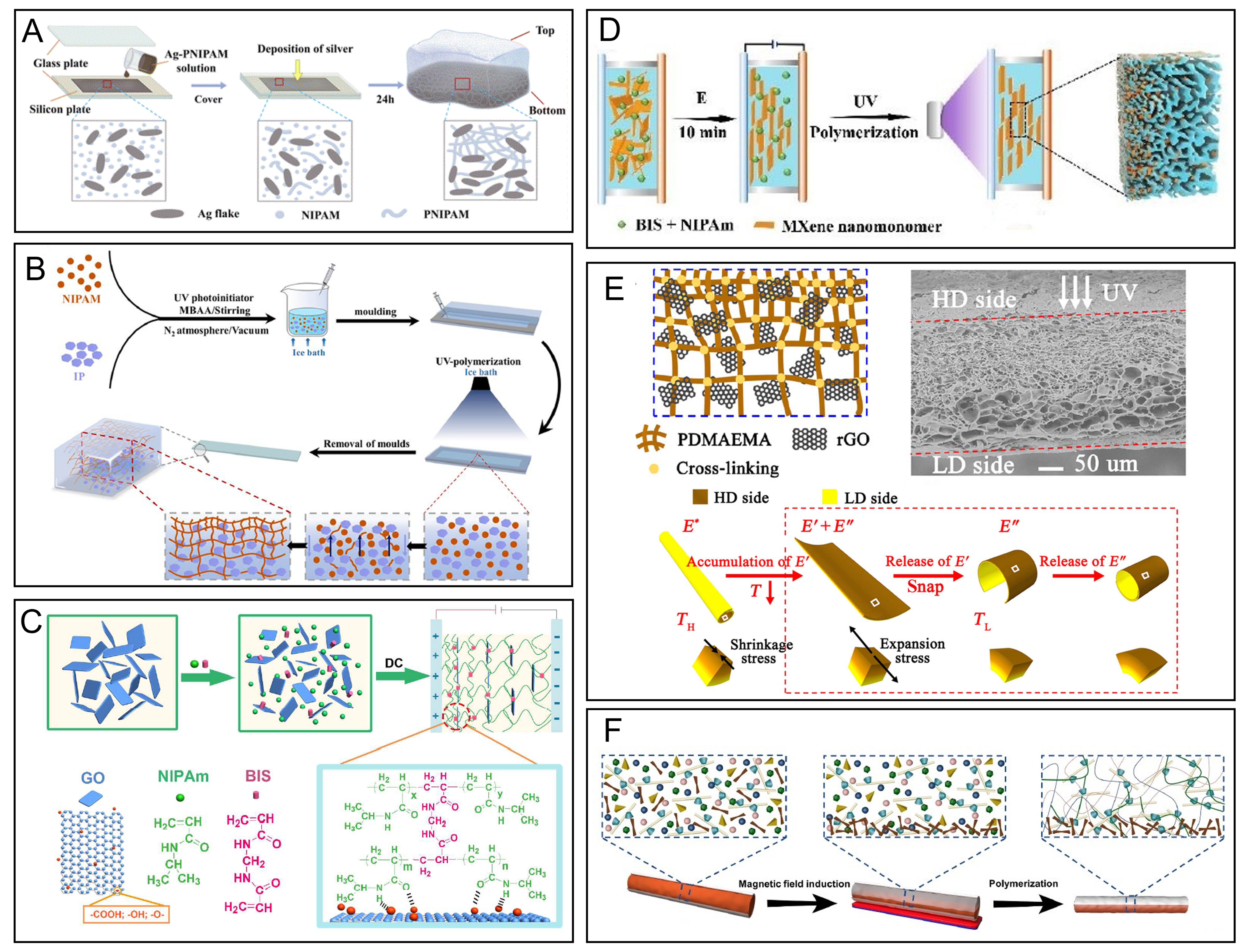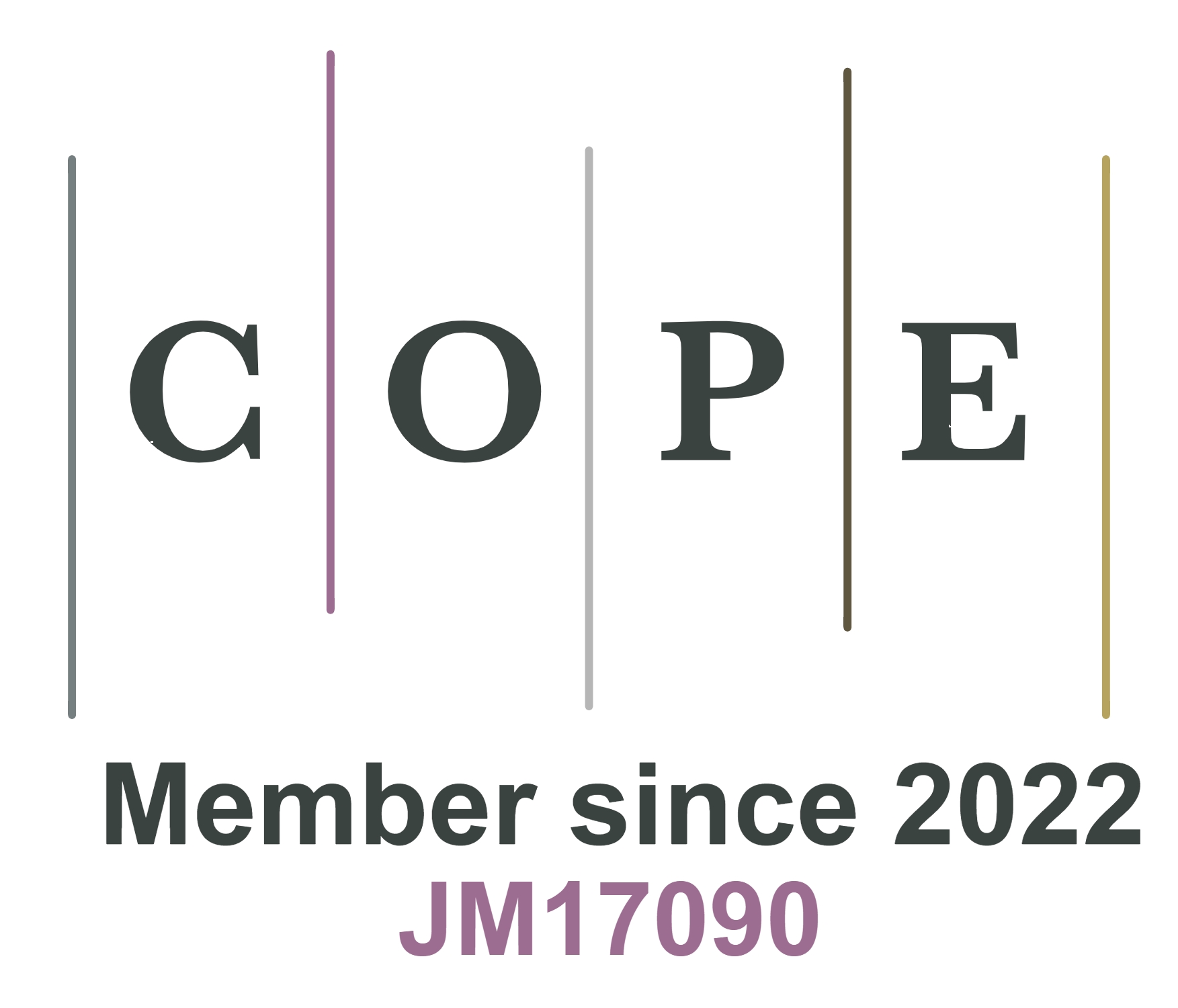fig6
Figure 6. The anisotropic hydrogel actuators with gradient structures. (A) Schematic representation of the synthesis of Ag-PNIPAM hydrogels induced by gravity deposition. Reproduced with permission[41]. Copyright 2022, Royal Society of Chemistry; (B) Schematic representation of UV-induced polymerization of IPs-containing PNIPAM hydrogel structures. Reproduced with permission[131]. Copyright 2021, Elsevier; (C) Scheme of preparation of PNIPAM/GO gradient hydrogel. Reproduced with permission[132]. Copyright 2018, American Chemical Society; (D) Schematic diagram of the preparation of MXene-containing gradient hydrogel actuator using the electric drive. Reproduced with permission[134]. Copyright 2021, Wiley-VCH; (E) Schematic diagram and SEM cross-section diagram of the double gradient structure of the rGO/PDMAEMA hydrogel sheet and the reverse snapping deformation of the composite hydrogel sheet when moving from TH to TL. Reproduced with permission[121]. Copyright 2019, American Association for the Advancement of Science; (F) Schematic illustration of gradient hydrogel actuator prepared by magnetic field induction. Reproduced with permission[129]. Copyright 2023, Elsevier. PNIPAM: Poly(N-isopropylacrylamide); UV: ultraviolet; IPs: inorganic particles; GO: graphene oxide; SEM: scanning electron microscopy; rGO: reduced graphene oxide; PDMAEMA: poly (N, N-dimethylaminoethyl methacrylate).











